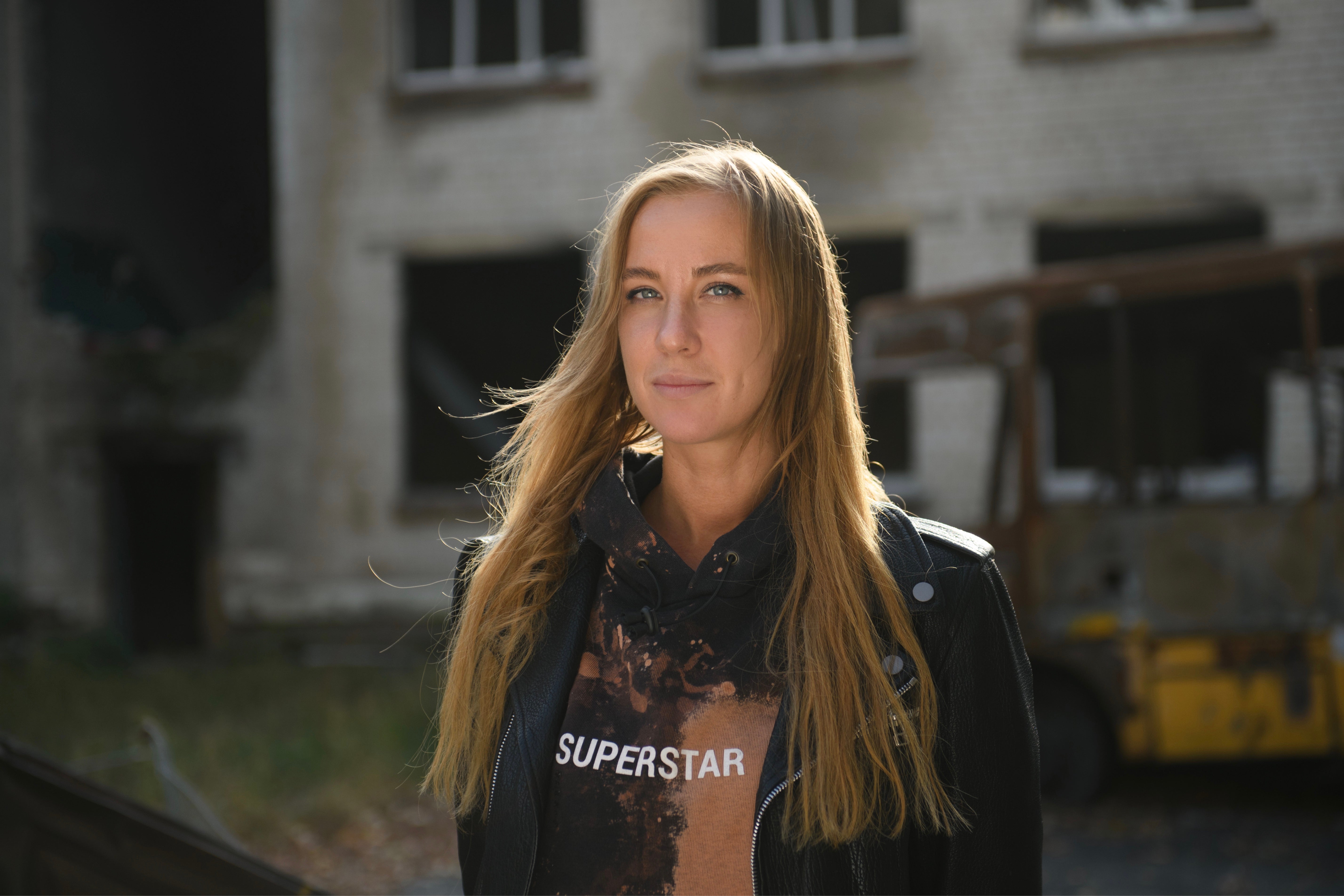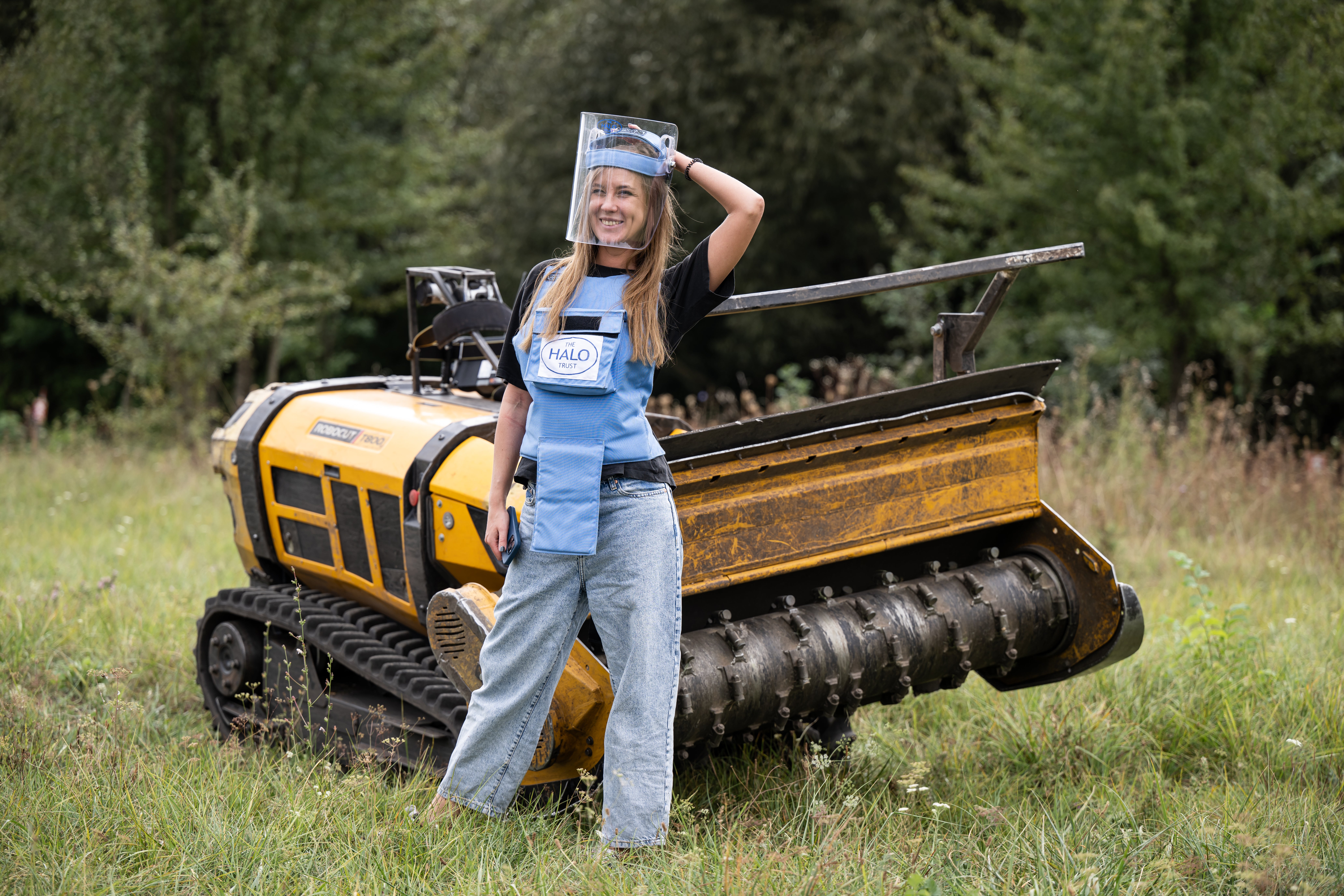In the words of Iryna Krykunenko: “Women in demining is not just a profession, but an opportunity to make a real contribution to the safe future of Ukraine”
Date:

Iryna Krykunenko has worked in social journalism for a long time. Shortly after the start of Russia's full-scale invasion of Ukraine, she joined the demining sector as a communications expert at HALO Trust Ukraine, an international humanitarian demining organization.
Read about the organization's activities, Ukraine's needs for humanitarian demining, and the role and professional development of women in this area in our interview with Iryna on the occasion of the International Day for Mine Awareness and Assistance in Mine Action.
Could you tell us about the organization? What are its main activities?
The HALO Trust Ukraine is the Ukrainian program of the international charitable organization engaged in humanitarian demining. It was founded 36 years ago in Afghanistan and now operates in more than 30 countries and territories around the world. We started operating in Ukraine in 2015, focusing initially on Luhansk and Donetsk oblasts. By 2022, our team consisted of about 400 people and had demined more than 9.5 million square meters of land, but due to Russia's full-scale invasion, all the results of our previous work were actually lost.
We are currently working in 9 regions of Ukraine. Mine action is taking place in six regions: Kyiv, Chernihiv, Sumy, Kherson, Mykolaiv and Kharkiv regions. In Dnipro, Odesa and Donetsk regions, we conduct non-technical surveys of potentially dangerous areas and raise awareness of mine risk among the population.
During this time, our team has grown to 1,500 people, 30% of whom are women. Since February 2022, they have demined more than 8.2 million square meters of Ukrainian land for further use.
How did you become involved in this field?
I have a background in journalism. Since the beginning of the full-scale invasion, I have been working more and more on military and social issues, but later I realized that I wanted to be not just an observer, but to be directly involved in the changes. Like many women, this became a way for me to actively help the country and make a real contribution to the security of Ukraine.
What is humanitarian demining and what role does it play in Ukraine?
Humanitarian demining is the process of removing explosive hazards from territories after de-occupation or the end of active hostilities in a particular area. Compared to military demining, which ensures the advancement of military operations, or the work of emergency services that respond to specific findings, humanitarian demining is aimed at one hundred percent land clearance for the safe return of civilians to a normal life.
We work only in areas where there are no longer any hostilities, and we explore areas that may be contaminated with mines or unexploded ordnance.
What are the current humanitarian demining needs in Ukraine?
Ukraine is currently one of the most mined countries in the world. According to official government data, at least 134,000 square kilometers of territory are potentially contaminated with mines and explosives. This is about 20% of the country's territory.
As of the beginning of 2025, there are more than 4,500 sappers and deminers in Ukraine. However, according to experts, this number should be much higher to ensure rapid cleanup of the territories. This means that Ukraine is in constant need of new specialists. Currently, there are about 87 mine action operators, including government, private, humanitarian and international organizations. It is currently impossible to make an accurate forecast of the time required to completely demine the country. But it will take at least a decade.
The demining efforts depend on human resources, funding, the security situation and the development of new technologies. For example, different types of explosive threats may be present at the same site at the same time: anti-tank and anti-personnel mines, plastic-cased mines, booby traps and unexploded ordnance. This greatly complicates the clearance process, as each of these threats requires separate methods. In addition, the security situation is constantly changing, which can lead to the termination of work at sites or even to the re-contamination of already cleared areas.
This has a number of critical consequences. First of all, it is a deadly danger to people, but also a significant economic loss: Ukraine loses tens of billions of dollars every year due to mined land. This is especially significant for the agricultural sector, where the inability to cultivate fields affects the domestic market, exports, and global food security.
To what extent is this field accessible to women? How has the situation changed since the start of the full-scale Russian invasion?
We actively encourage women to participate in demining at all levels. Currently, approximately 30% of employees in our organization are women, and this figure is aligned with general trends in the sector. Women work in all areas: piloting drones, driving armored demining vehicles, explosive ordnance disposal, image analytics, researches and innovations, planning demining operations and training new specialists. In the practice of The HALO Trust, there are countries where the ratio of women to men in programs is about 50%, and we definitely strive to achieve such results in Ukraine.
Until 2017, there were legislative restrictions that did not allow women to work in demining-related professions, as this activity was included in the list of “dangerous professions.” Thanks to the advocacy of international organizations, this restriction was lifted, and women gained official access to work in this field.
In general, the humanitarian demining sector is one of the most open and accessible for women, and offers real opportunities for professional development.

What stereotypes do women face in this field?
One of the most common myths is the notion that demining is dangerous for women or requires any special physical criteria. In fact, this profession has clear safety protocols that reduce all risks to zero. In addition, the latest technologies, such as drones and remote-controlled vehicles, allow demining to be carried out as efficiently and safely as possible for everyone.
It is important to understand that demining is not only physical work, but also requires accuracy, attentiveness, analytical thinking and the ability to work in a team. That's why women demonstrate a high level of professionalism and perform well in the field.
Another stereotype is that women cannot hold leadership positions in this field. But practice shows the opposite: women lead large teams, manage entire demining operations in challenging regions and introduce innovations.
So this field is open to everyone, regardless of gender, age, or physical condition.
How long does the training process last before women start working in demining?
Speaking of the standard process, a person first applies, has an interview, gets selected, and enrolls in the program.
The training lasts about a month and is paid for. During this time, a person not only learns the protocols and standards of work, but also has the opportunity to understand whether this field is relevant to them. This is important for everyone, including women, so that they can try themselves and make sure that this profession fits them and is within their capabilities.
If the candidates pass the exams, they are offered jobs. In most cases, our graduates stay on to work in the demining field.
What are the peculiarities of uniforms and equipment for female deminers?
The demining field uses special protective clothing that is quite massive. Standard uniforms and armor have historically been designed for men, and they may be less comfortable for women.
That's why we are implementing adapted equipment: armor and uniforms that take into account the peculiarities of women's anatomy. I can tell you from personal experience that even if our standard clothing fits your size, it is not always comfortable due to its general cut. That's why we are working to make women's uniforms more comfortable and functional, and we have added sports bras to the set.
We are currently testing new samples of women's armor, and based on the feedback we receive, we will be able to make even more necessary changes - perhaps add or remove something to make it as comfortable as possible for women.
What career opportunities does this sector offer for women?
Women in our organization can build their careers in different areas. For example, if a person wants to grow further, they can take a paramedic course, which lasts about two weeks. Paramedics work in demining teams and are responsible for providing first aid if necessary.
If one is interested in technology, it is possible to take training as a drone pilot or operator of remote demining machines. You can also learn how to dispose of explosive ordnance.
Career growth is also possible in management. For example, we have women who started out as deminers and later became team leaders, then areas, and then regions. You can also always switch to other areas within the organization. One of our colleagues started her career as a deminer and now she is engaged in mine risk education.
There are many opportunities for development in this field, and everyone can find the best possible direction for themselves.
What motivates women to join demining professions?
When we talk about demining, it is primarily about the safety of the places where we live and where our children grow up. This often becomes a deadly threat for people living in remote villages and communities in Ukraine: where children play in forests and near rivers, farmers work in fields, and locals walk along unpaved paths every day. And all these places can be covered with explosive ordnance. Therefore, for us, women, this is an opportunity not only to improve our well-being, but also to join an important mission that can save the lives and health of many.
These are extremely difficult times for Ukraine, and we are all doing our best. I am sure that many Ukrainian women feel an inner desire to get involved, to help, to support.
Also, most of our women have a personal motivation related to the difficulties they have experienced, war, occupation or displacement. This experience has become an additional incentive for them - a desire to help their communities, return to their homes, and make their homes safer for their children. Therefore, this is not just a profession, it is an opportunity to make a real contribution to the safe future of Ukraine.